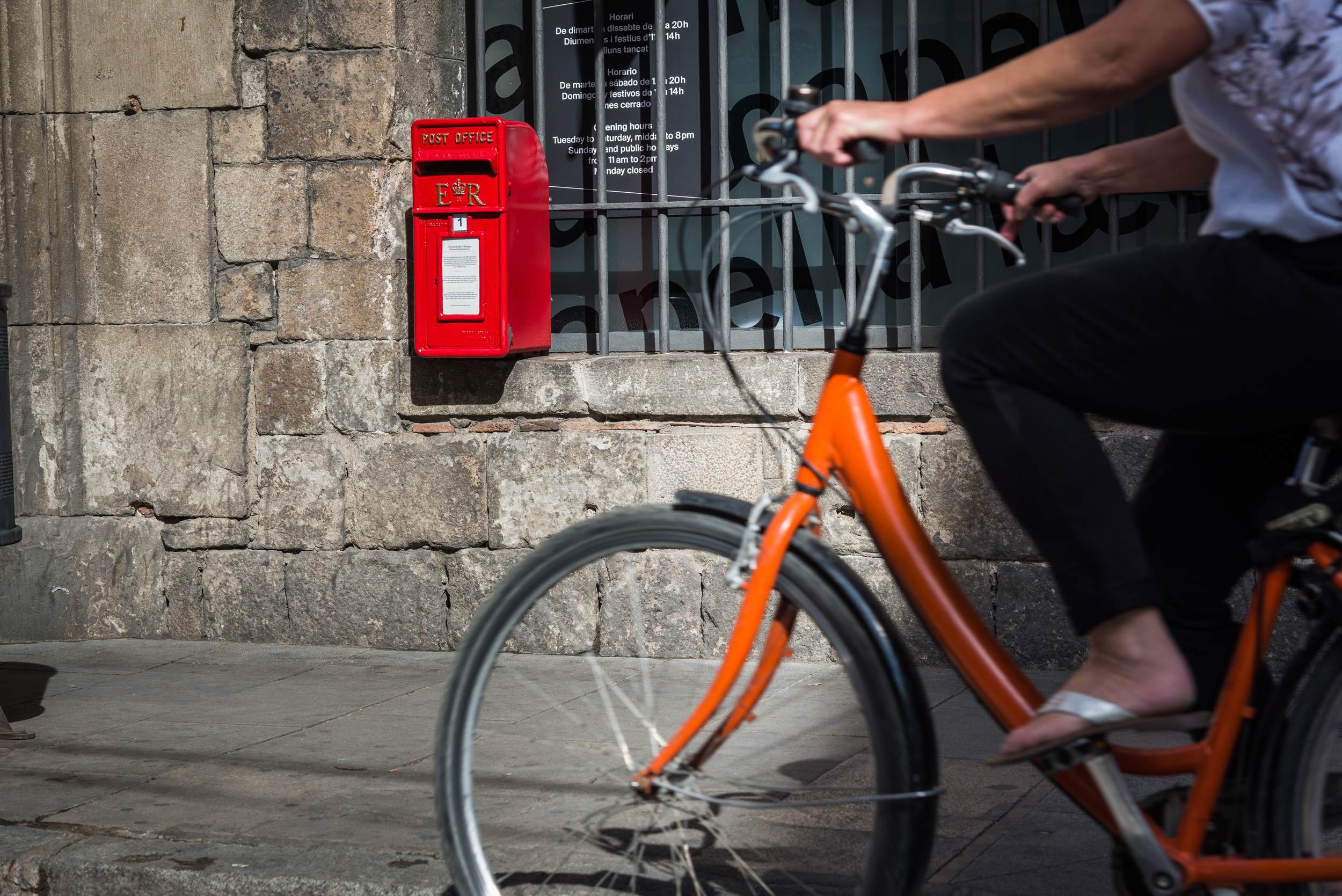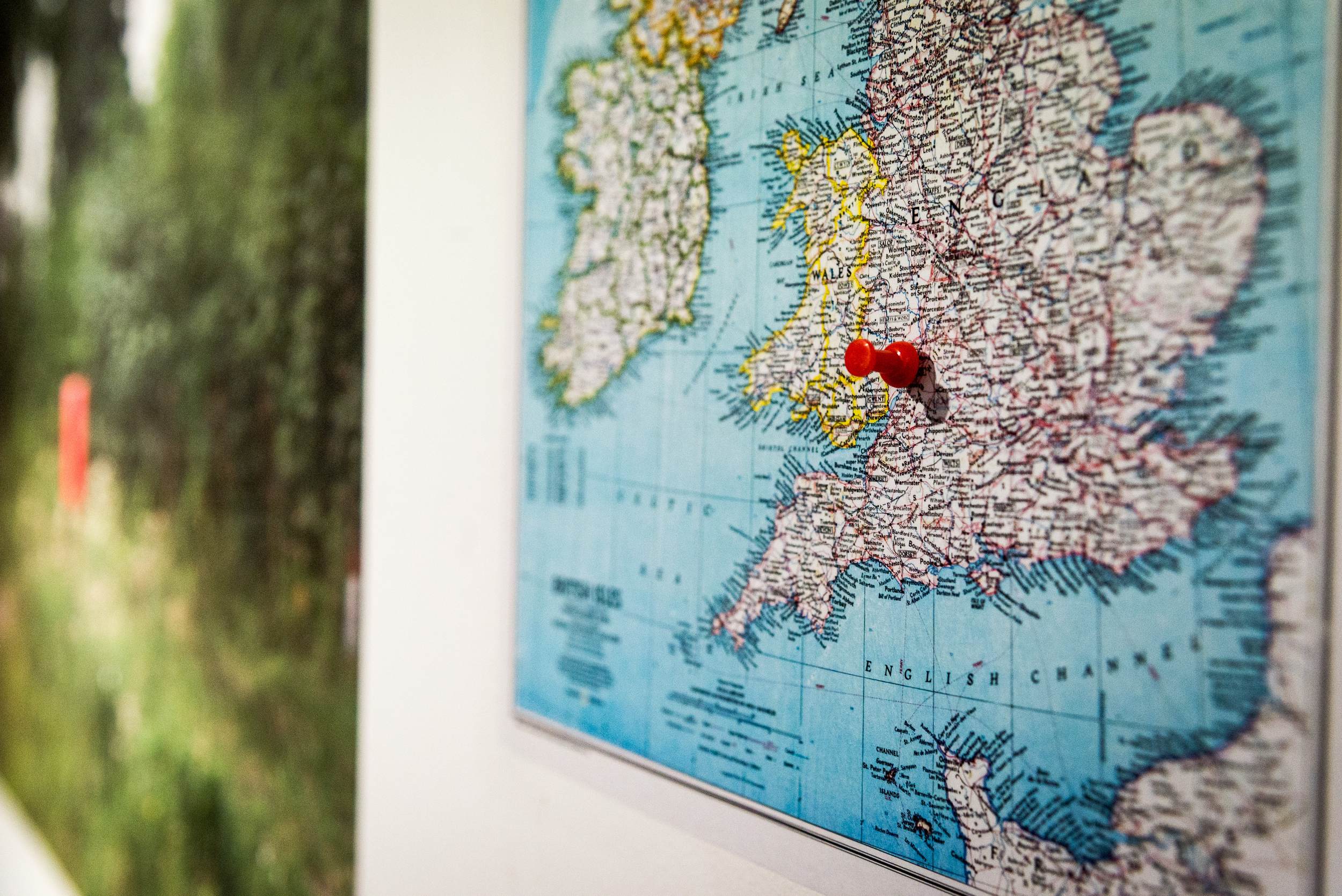Letters from the Forest
Letter 1.
Letter 2.
Letter 3.
A year ago Bárbara Sánchez decided to leave behind her life in the city and move to a community in the Forest of Dean in Gloucestershire County (England), a natural place removed from everything she knew and from what any city represents: the competitive individual distanced from everything natural, 24-hour consumerism and technological, ideological and cultural dependence. This experience has made her reflect on the authenticity and beauty of what has always been here, predating us, which we did not create. It led her to understand that sooner or later the way you treat the other has an effect on you – “you reap what you sow” – and it is making her question more things than can really be explained in words since when we internalize the experience of the forest we understand what John Fowles wrote,1 that “its secret is being, not saying”. The English author, one of the artist’s referents, opens a question Bárbara shares: “The wood waits, as if its most precious sap were stillness. I ask why I, of a species so incapable of stillness, am here”. Hence a central theme of this project is the notion of time; the passage and administration of our time, which, compared with the temporal magnitude of the forest where past and present are interwoven, is futile. The fact is that “there are tenses human language has yet to invent”, Fowles warns us.
The “romanticization” of nature and its contradictions today is another of the concepts the artist confronts, so when she obsessively rereads Henry David Thoreau,2 “I went to the woods because I wished to live deliberately, to front only the essential facts of life, and see if I could not learn what it had to teach, and not, when I came to die, discover that I had not lived”, she at the same time reviews the link between the economic crisis with this sort of return to the origin we are experiencing today. Leaving the city, having a garden, living with fewer resources and recycling, does this reflect a sincere return or do we have no other option? When much of the generation of our parents emigrated to the cities in search of a “better life”, does this return indicate reconciliation with nature? Is there still time? And lastly, is isolating oneself in nature a real act of political commitment, civil disobedience and peaceful resistance to the imposed system? Bárbara, like Fowles, doubts that nature can be reached by turning it into a ‘useful’ therapy, since “The subtlest of our alienations from it, the most difficult to comprehend, is our need to use it in some way, to derive some personal yield. We shall never fully understand nature (or ourselves), and certainly never respect it, until we dissociate the wild from the notion of usability – however innocent and harmless the use. For it is the general uselessness of so much of nature that lies at the root of our ancient hostility and indifference to it”. From there the artist adds other referents: from the controversial (and at once epic and stupid) story of Alexander Supertramp, the nickname of Christopher McCandless, star of Into the Wild, who died of starvation (or poisoning) in the bush just a few kilometres from civilized food, to the notion of ecofeminism and reinterpretation of the Anthropocene concept Donna Haraway makes when she speaks of returning to origins by placing woman at the centre, among others.
When the artist arrived in the forest she found a typical English red post box in front of the house she would live in. For some time she had wanted to work with correspondence as an artistic project and she chose to do so through video letters, filmed letters that pay tribute to the critical documentary of Chris Marker and Harun Farocki, the mystical and psychological dimension of Tarkovsky’s cinema and the poetic correspondence between Víctor Erice and Abbas Kiarostami. She will send them to La Capella weekly and the postman will deposit them in a similar post box placed at the entrance to La Capella on Carrer Hospital. They are addressed to any spectator who sits down to “read them/watch them” at Espai Cub, and they can be “responded to” by depositing the correspondence in the same post box, following the instructions at the gallery.
When I ask Bárbara if she thinks that the life she leads now is really a more authentic and liberated life, she replies that she doesn’t know yet, that perhaps after the project she will know. The thing is that here the artistic practice is approached not only as an investigation or experience but as “direct observation”, in the same sense that Fowles gives to the observation that nature entails and which the artist sees as a synthetic activity distinct from science: “Science has little time for minor exceptions. But all nature, like all humanity, is made of minor exceptions [...] A belief in this kind of exception is as central to art as a belief in the utility of generalization is to science”.
We are thus witnessing a project in progress, deeply experiential and in open communication, that eschews the grandiloquence of “the gardened word” and which is ultimately the artist’s sincere and intimate correspondence with herself that does not close because she knows that hers is not a solitary sentiment: “The shadow of the Wild Woman”, Clarissa Pinkola Estés reminds us, “still lurks behind us during our days and in our nights. No matter where we are, the shadow that trots behind us is definitely four-footed”.
Mireia Sallarès, La Capella





Video stills from Letters from the Forest.




Installation views at La Capella, Barcelona, 2016.
Hace un año Bárbara Sánchez decidió dejar atrás su vida en la ciudad e irse a vivir a una comunidad en el bosque de Dean, en el condado de Gloucestershire (Inglaterra), un paraje natural alejado de todo lo que ella conocía y de lo que cualquier ciudad representa: el individuo competitivo y distanciado de todo lo que es natural, el consumismo de 24 horas y la dependencia tecnológica, ideológica y cultural. Esta experiencia la ha hecho reflexionar sobre la autenticidad y la belleza de lo que siempre ha estado aquí, antes que nosotros, y que nosotros no hemos creado. La ha llevado a entender que tarde o temprano el modo en que tratas al otro tiene un efecto en ti –“recogemos lo que sembramos”–, y le está haciendo cuestionar más cosas que las que realmente puede explicar con palabras, puesto que al interiorizar la vivencia del bosque entendemos, como decía John Fowles,1 que “su secreto consiste en ser, no en decir”. El autor inglés, uno de los referentes de la artista, nos plantea una duda que Bárbara comparte: “el bosque aguarda como si su savia más preciada fuera la quietud. Y me pregunto por qué, perteneciendo yo a una especie tan poco dada a la quietud, sigo aquí”. Por eso un tema central de este proyecto es la noción de tiempo, del paso y la administración de nuestro tiempo, que, comparado con la magnitud temporal del bosque, donde pasado y presente se entrelazan, es fútil. Y es que “hay tiempos que el lenguaje humano aún debe inventar”, nos advierte Fowles.
La “romantización” de la naturaleza y sus contradicciones actuales es otro de los conceptos que aborda la artista; por eso, cuando relee obsesivamente a Henry David Thoreau2 –“Fui a los bosques porque quería vivir a conciencia, quería vivir a fondo y extraer todo el meollo a la vida, y dejar a un lado todo lo que no fuese vida, para no descubrir, en el momento de mi muerte, que no había vivido”–, revisa a la vez el vínculo de la crisis económica con esta especie de retorno al origen que vivimos hoy en día. Abandonar la ciudad, tener un huerto, vivir con menos recursos y reciclar, ¿obedece a un retorno sincero o es que no tenemos otra opción? Cuando buena parte de la generación de nuestros padres emigró a las ciudades en busca de una “mejor vida”, ¿este regreso significa una reconciliación con la naturaleza? ¿Aún estamos a tiempo? Y finalmente, ¿aislarse en la naturaleza es un acto real de compromiso político, de desobediencia civil y resistencia pacífica al sistema impuesto? Bárbara, como Fowles, duda de que se pueda llegar a la naturaleza convirtiéndola en una terapia “útil”, puesto que “la más sutil de nuestras alienaciones, la más difícil de comprender, es precisamente esa necesidad nuestra de sacarle cualquier tipo de provecho. Nunca podremos entender por completo la esencia de la naturaleza (ni a nosotros mismos), y nunca la respetaremos si no somos capaces de diferenciar el concepto de lo salvaje del concepto de utilidad. Porque es precisamente la inutilidad de la mayor parte de la naturaleza lo que ha hecho que siempre nos hayamos mostrado hostiles e indiferentes hacia ella”. A partir de aquí, la artista va sumando otros referentes: desde la polémica historia –épica y estúpida a la vez– de Alexander Supertramp, el alias de Christopher McCandless y protagonista de Into the Wild, que murió de hambre (o envenenado) en el bosque a pocos kilómetros de la comida civilizada, hasta la noción de ecofeminismo y la relectura del concepto de antropoceno que realiza Donna Haraway cuando habla de volver a los orígenes situando a la mujer en el centro, entre otros.
Cuando la artista llegó al bosque, halló el típico buzón inglés de color rojo delante de la casa donde viviría. Hacía tiempo que quería trabajar la correspondencia como proyecto artístico y ha optado por hacerlo a través de videocartas –cartas filmadas que homenajean el documental crítico de Chris Marker y Harun Farocki, la dimensión mística y psicológica del cine de Tarkovsky o la correspondencia poética entre Víctor Erice y Abbas Kiarostami–. Las enviará a La Capella semanalmente y el cartero las introducirá en un buzón similar colocado en la entrada de la calle Hospital. Están dirigidas a cualquier espectador que se siente a “leerlas/verlas” en el Espai Cub y que podrá “contestar” depositando la correspondencia en el mismo buzón siguiendo las instrucciones indicadas en la sala.
Letter 4.
Letter 5.
Letter 6.
Letter 7.
Cuando pregunto a Bárbara si cree que esta vida que lleva ahora es realmente una vida más auténtica y liberada, me responde que aún no lo sabe, que quizá lo sabrá después del proyecto. Y es que aquí la práctica artística se plantea no solo como investigación o vivencia, sino como “observación directa”, en el mismo sentido que Fowles da a la observación que la naturaleza implica y que el autor ve como una actividad sintética diferenciada de la ciencia: “La ciencia dispone de poco tiempo para las pequeñas excepciones, pero la naturaleza, al igual que la humanidad, está hecha de pequeñas excepciones. […] Creer en ese tipo de excepciones es tan fundamental para el arte como para la ciencia lo es creer en la utilidad de las generalizaciones”.
Así pues, somos testigos de un proyecto en proceso, profundamente vivencial y en comunicación abierta, que elude la grandilocuencia de “la palabra ajardinada” y que en último término es una correspondencia íntima y sincera de la artista consigo misma que no se cierra, porque sabe que el suyo no es un sentimiento solitario: “La sombra de la Mujer Salvaje”, nos recuerda Clarissa Pinkola Estés, “acecha todavía a nuestra espalda de día y de noche. Dondequiera que estemos, la sombra que trota detrás de nosotros tiene sin duda cuatro patas”.
Mireia Sallarès, La Capella